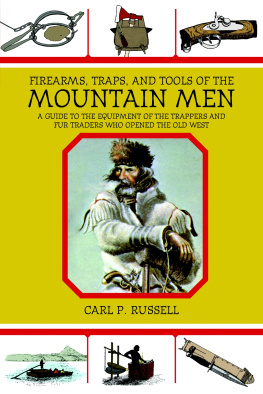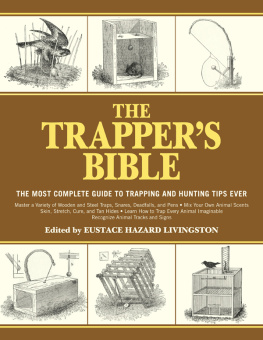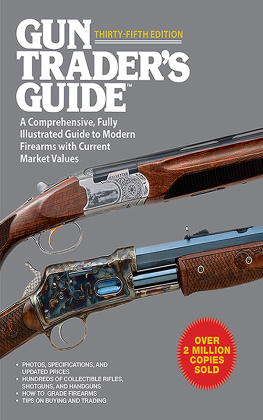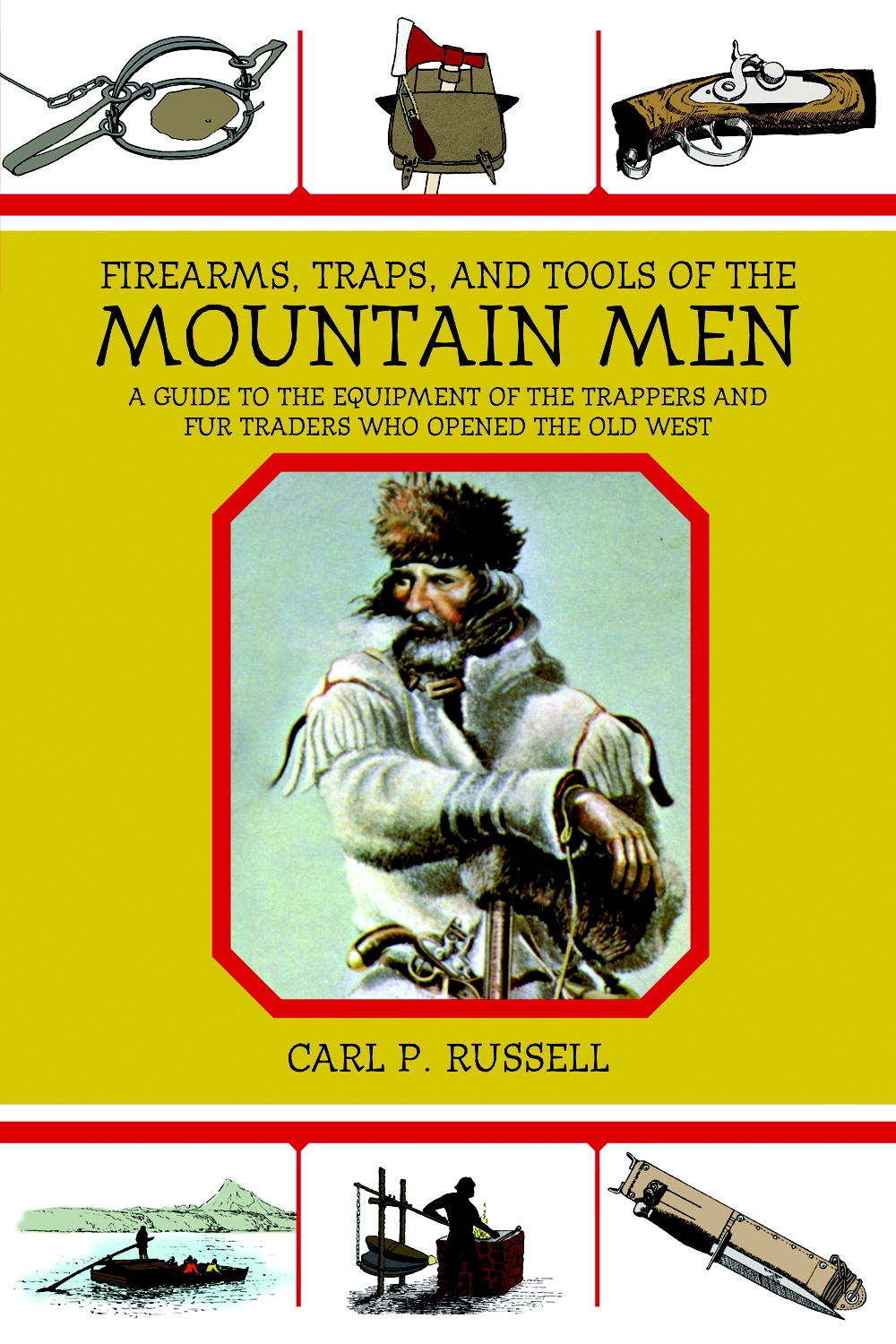ACKNOWLEDGMENTS
W ORK ON THIS BOOK WAS INITIATED IN 19304 WHEN IT devolved upon the writer to organize the story of the mountain man for museum purposes in Yellowstone National Park. Since that time, Western fur-trade studies have been one of the authors major interests, both in official work and in purely personal endeavors. In the early years of the studies, a few venerable pioneers of the Plains and the Rockies were still available for interviews. These old-timers cannot be classified as mountain men, but they had associated with mountain men in the time of the long shadows of mountain-man life. From the lips of these witnesses came some interesting testimony, and from their places of last retreat came a few fur-trade relics with known histories. Particularly, a debt of gratitude is owed to J. P. V. (Trapper) Evans, Captain H. Cook, Will Everson, Charles Marble, and the admirable old Chief of the Crows, Plenty Coups.
The scope and general nature of the present survey of iron artifacts of the trader-trapper are such as to have necessitated help from numerous collaborators. The text, footnotes, and bibliography identify most of these allies, yet certain individuals and agencies have given assistance so basic in nature as to predicate further acknowledgment.
The National Park Service, the American Association of Museums, and the Oberlander Trust jointly sponsored my tour of museums in twenty European cities shortly before World War II. In several of the repositories visited I was enabled to study numerous significant weapons and other iron objects constituting parts of the ancestral line of Indian trade goods. In the United States the American Association of Museums sponsored several trips to American museums, thereby giving me the opportunity to study many of the artifacts here reported upon. Museum directors, owners of private collections, and curators everywhere gave generously of their knowledge, their time, and their facilities; subsequent to my visits, many of them have corresponded with me, supplying copies of needed documents, translations of museum records, photographs of specified artifacts, and commentaries regarding identification and the history of the objects. Among the scores of collaborators who have contributed are the following to whom I am especially indebted: Douglas Adair, William and Mary Quarterly; John Barsotti, Columbus, Ohio; A. T. Bowie, Natchez, Mississippi; George R. Brooks, director, Missouri Historical Society; the late Dr. H. C. Bumpus, formerly of the American Association of Museums; Warren W. Caldwell, Missouri Basin Project; the late Dr. Robert Glass Cleland, formerly at the Huntington Library; Dr. Laurence Vail Coleman, formerly director, American Association of Museums; Dr. Cyril B. Courville, Cajal Laboratory of Neuropathology; Stuart Cuthbertson, Los Angeles; Clair M. Elston, president, The Collins Company; John C. Ewers, U. S National Museum; T. M. Hamilton, University of Missouri; Charles E. Hanson, Museum of the Fur Trade, Chadron, Nebraska; Dr. Kenneth E. Kidd, Trent University, Ontario; W. C. Lawrence, Museum of the Frontier, Jackson, Wyoming; Stephen R. Leonard, formerly with the Oneida Community; Harry E. Lichter, Oregon Historical Society; Dr. Philip K. Lundeberg, U. S. National Museum; Dr. R. S. Shankland, Case Institute of Technology; Dr. Carlyle S. Smith, University of Kansas; Dr. Cyril Stanley Smith, Massachusetts Institute of Technology; Dr. R. F. G. Spier, University of Missouri; Dr. Tracy I. Storer, University of California, Davis; Dr. H. J. Swinney, Idaho Historical Society; Charles Van Ravensway, formerly director, Missouri Historical Society; Thomas Vaughan, director, Oregon Historical Society; Dr. Waldo R. Wedel, U. S. National Museum; Arthur Woodward, formerly of the Los Angeles Museum; and Erwin Zepp, formerly head of the Ohio State Museum.
Since its inception, this fur-trade-history project has been nurtured by the National Park Service. Five directors, beginning with Horace M. Albright, have extended encouragement. There are today nineteen field areas within the National Parks system which have fur-trade significance because of historical events which transpired within them or in their immediate environs, or because they memorialize the trapper-trader and his activities. Bents Old Fort, Fort Laramie, Fort Vancouver, Grand Portage, Grand Teton, Scotts Bluff, and Yellowstone are particularly notable among these fur-trade sites. National Park Service personnel direct their studies upon fur-trade subjects in these parks and monuments and in central offices in Washington, D.C.; Santa Fe, New Mexico; Omaha, Nebraska; Philadelphia, Pennsylvania; and San Francisco, California. A great deal of this effort focuses upon the Jefferson National Expansion Memorial, St. Louis, and that unit has been very much a home port for the present writers study project.
To name all National Park Service workers who have contributed to this study of iron weapons and tools would be listing a large part of the Service personnel engaged in administrative, historical, archeological, and museum work. There are several, however, who gave especially important assistance through a period of many years: Roy Appleman, Edward Beatty, the late Ned J. Burns, Louis Caywood, John Cotter, William C. Everhart, John C. Ewers, E. Raymond Gregg, the late Ansel F. Hall, Dr. J. C. Harrington, the late Dr. Alfred F. Hopkins, J. Paul Hudson, Dr. John Hussey, the late John Jenkins, Herbert Kahler, Ronald F. Lee, Ralph Lewis, John Littleton, William Macy, Merrill E. Mattes, James Mulcahy, Charles Peterson, Harold Peterson, Julian Spotts, Robert Starett Hillory A. Tolson, Dorr G. Yeager. It is not exceeding the truth to say that this book could not have been written without the long-time cooperation of the foregoing associates.
Among the libraries, historical societies, government offices and other institutions which have cooperated, several not mentioned in the preceding paragraphs have given extraordinary help. The Missouri Historical Society possesses one of the truly great collections of manuscripts pertaining to the mountain man and his predecessors in the beaver business. Also a wealth of three-dimensional materials representative of the Western fur trade is owned by the Society. These sources have been made available to the present study; archivists and curators gave of their help most generously, and a number of their artifacts were used in the illustrations here reproduced. It is to be acknowledged also that the Bulletin of the Missouri Historical Society published my Picture Books of Fur Trade History, reprints of which proved useful as I solicited the cooperation of scholars, collectors, and other historical societies.
Among the distinguishing attributes of The New-York Historical Society is its ownership of the phenomenal collection of American Fur Company Papers, 183149. During years preceding the microfilming of these manuscripts, I benefited by the help of the Societys very patient librarians who wheeled out truckloads of the documents for my perusal. More recently I have made much further use of these materials, which now are represented in many libraries in microfilm copy.
During some years of residence in the Chicago area, I took opportunity to frequent the archives of the Chicago Historical Society, and there a staff of most courteous librarians saw to it that my needs for additional (and earlier) records of the American Fur Company were served. This involved some inter-library service, assistance which was cheerfully extended and for which my thanks are due.
In Berkeley, California, the University of California Library has been very much my home base for a good many years. Helpful librarians and the tremendous collections there, and at the Bancroft Library are never-failing, and auxiliary aid, such as photostatic services, have been important to my illustrations project.







